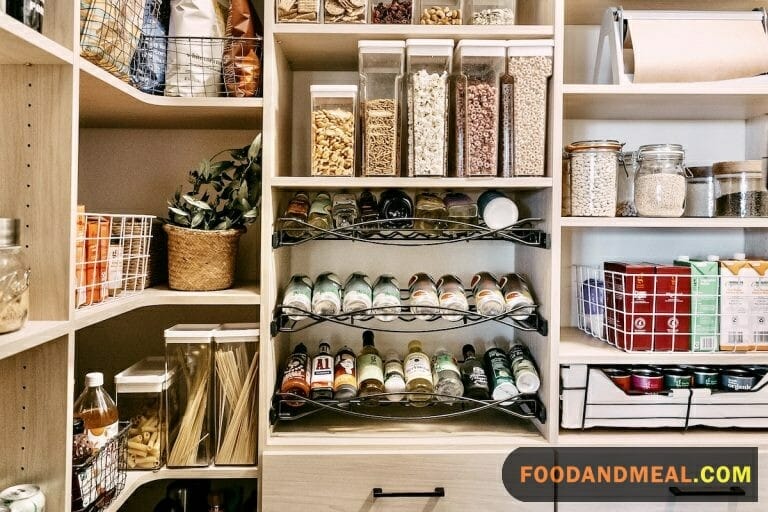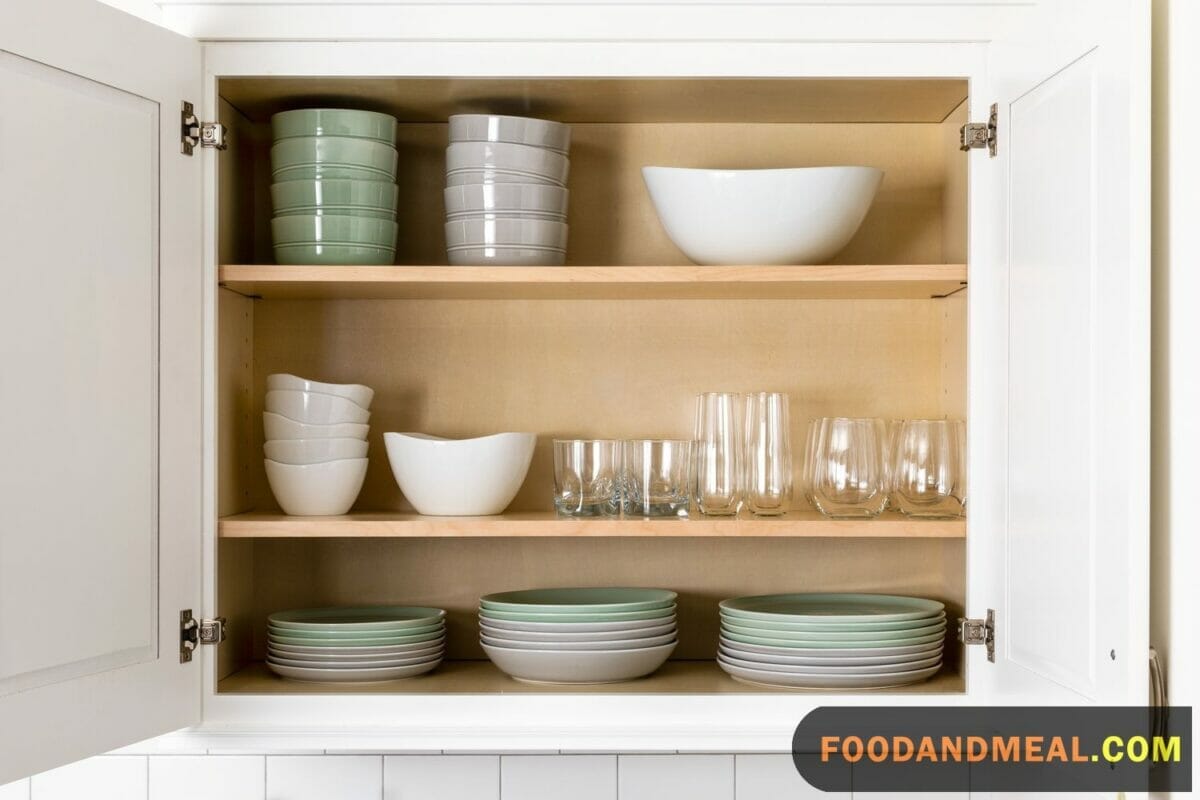The kitchen stands as one of the most frequented spaces within a home, particularly for avid home cooks and food enthusiasts. In this bustling hub, maintaining an orderly and chic environment can often seem like an unattainable aspiration—something that belongs more to Instagram feeds than to real-life kitchens. In reality, kitchen tools and appliances vie for drawer space, valuable spices vanish amidst a cluttered array of jars, and pots and pans that don’t quite fit together precariously stack up.
However, it’s important to recognize that this need not be the enduring reality. This article aims to bridge the divide between your kitchen dreams and the practicalities of everyday life by addressing a significant component: your kitchen cabinets and drawers.
Clean Slate
Much like a sturdy foundation is essential for building a home, achieving your kitchen aspirations hinges on starting with a pristine canvas. Even if you can’t set aside an entire day or weekend for this endeavor, we strongly advise against omitting this crucial step. Instead, consider breaking down the task of cleaning your kitchen cabinets into manageable segments. Start with those cabinets you rarely interact with and progressively work your way towards the ones you frequently use.
When confronted with stubborn stains, particularly grease splatters, it’s advisable to adopt a gentle cleaning approach. Avoid using warm water and vinegar, despite its popularity as a cleaning solution, as it can potentially compromise the finish on your cabinets.
Visibility is Key
Have you ever rummaged through a drawer or cabinet in search of a specific item, only to inadvertently create a bigger mess? This is precisely why we advocate for ensuring that tools, utensils, spices, and other items are readily visible and well-organized. As we’ve gleaned from recent experiences, organizing our cupboards, freezers, and pantries can significantly enhance our sense of well-being and tranquility.
In light of this, we set out to create a storage solution that embodies efficiency, affordability, adaptability, and transparency, and we designed it ourselves.
Additional strategies to consider involve the incorporation of increasingly taller shelving units within your cabinets to accommodate spices, or arranging the taller bottles towards the rear for improved visibility. Utilizing a pull-out pantry system can facilitate swift and effortless scanning of your provisions. For frequently used utensils, such as spatulas or tongs, a practical solution is to store them in a holder on the countertop, ensuring convenient accessibility at all times.

No Space Left Behind
It’s quite likely that the surfaces of your cabinets, tables, and walls offer untapped storage potential! Here are some ideas to maximize space:
- Hooks for Pots and Utensils: Depending on the available space, consider installing hooks to hang your pots, pans, or utensils. This not only saves space but also keeps your kitchen essentials within easy reach.
- Magnetic Strip for Knives and Scissors: Install a magnetic strip on a wall or the side of a cabinet to store knives, culinary scissors, and other metal utensils securely. This provides a convenient and space-saving storage solution.
- Tension Rods for Organization: Use a tension rod inside a cabinet or install a bar on the interior side of the cabinet door. This is an excellent method for organizing items like spray bottles, gloves, and towels, keeping them neat and accessible.
- Pegboard for Versatile Storage: Hang a pegboard on a kitchen wall to create versatile storage space. Attach and detach wire baskets and shelves as needed, allowing you to customize your storage layout for different items.
By making the most of these storage solutions, you can optimize your kitchen’s organization and functionality while making the most of your available space.

Get Creative
It’s easy to fall into a routine and overlook opportunities for improvement. That’s why we’re here to inspire your creativity! Are you accustomed to organizing your drawers with simple vertical segments? Well, there’s a chance you’re wasting valuable space. Instead, consider crafting custom dividers to accommodate both small and large items in their designated spots. Another clever approach is to position dividers diagonally, solving the same problem by reserving middle slots for larger items and corner spaces for smaller ones.
In terms of optimizing kitchen functionality, think about how you want to move and navigate within the space. For instance, a rolling cart can assist you in swiftly gathering everything you need for meal preparation or help you maneuver heavy appliances.
Lastly, ponder whether all your kitchen items must reside exclusively in the kitchen. Could an electric kettle and a tea or coffee setup find a home in the dining room? Perhaps a stylish set of rarely used dishware could be stored elsewhere. Even cookbooks might thrive in the adjacent room. Explore these possibilities to make the most of both your kitchen space and overall home organization.
Think in all Dimensions
Master the art of kitchen organization by approaching your cabinets and drawers like a game of Tetris. Instead of resisting the shapes of your appliances, utensils, dishware, and cookware, work with them harmoniously. For instance, explore the possibility of optimizing space by storing plates or baking sheets in a rack horizontally rather than stacking them vertically. Another ingenious solution is to neatly prop up cutting boards inside a drawer, ensuring easy access without the need to lift items to reach the bottom of the drawer.
Express Yourself
Achieving a high level of organization in your kitchen doesn’t equate to sacrificing your personal style – in fact, we wholeheartedly encourage you to embrace it! Moreover, it doesn’t necessarily require a significant investment of time or money (though the idea of rustic ceiling beams does sound charming). Adding a touch of your unique style can be as simple as incorporating a couple of houseplants, introducing a colorful rug, or adorning your space with a vibrant tile backsplash – all of which can bring a great deal of joy and character to your kitchen.
By implementing these strategies and tailoring them to your kitchen’s unique layout and your personal preferences, you can transform your kitchen cabinets into an organized and visually appealing space that enhances your daily cooking and meal preparation experiences.
FAQs about Organize Your Kitchen Cabinets
- Q: Why is organizing kitchen cabinets important?
A: Organizing kitchen cabinets enhances efficiency, maximizes space, and makes it easier to find and access items. It also promotes a tidy and visually appealing kitchen.
- Q: How do I start organizing my kitchen cabinets?
A: Begin by taking everything out of the cabinets. Wipe down the shelves and assess each item. Discard expired or unused items, and group similar items together.
- Q: What’s the best way to categorize items in kitchen cabinets?
A: Group items based on function and frequency of use. Consider categories like baking supplies, pots and pans, dinnerware, and snacks. Keep frequently used items within easy reach.
- Q: Should I invest in organizers for kitchen cabinets?
A: Yes, organizers such as shelf risers, drawer dividers, and pull-out baskets can help maximize space and keep items neatly arranged. Choose organizers that suit the specific needs of your cabinets.
- Q: Where should I store pots and pans in kitchen cabinets?
A: Store pots and pans near the stove for easy access. Consider using vertical dividers or pull-out shelves to organize lids and pans more efficiently.
- Q: What’s the best way to organize food storage containers in cabinets?
A: Dedicate a specific cabinet or drawer for food storage containers. Nest containers with matching lids, and consider using storage bins or dividers to keep them organized.
- Q: How can I maximize space in small kitchen cabinets?
A: Utilize vertical space with stackable containers, shelf risers, or hooks for mugs and utensils. Consider using the insides of cabinet doors for storage by adding adhesive hooks or small shelves.
- Q: Should I label items in my kitchen cabinets?
A: Labeling can be helpful, especially for containers with bulk items or spices. It ensures everyone in the household can easily find and return items to their designated places.
- Q: What’s the best way to organize spices in kitchen cabinets?
A: Use spice racks, tiered shelves, or pull-out organizers to keep spices visible and easily accessible. Arrange them alphabetically or by type to streamline cooking.
- Q: How often should I declutter and reorganize kitchen cabinets?
A: Regularly declutter and reorganize your cabinets, ideally every few months. Take stock of items, discard expired goods, and adjust the organization based on your evolving needs.
- Q: How can I maintain the organization of my kitchen cabinets over time?
A: Encourage everyone in the household to return items to their designated places. Periodically reassess the organization system and make adjustments as needed. Consider using labels to remind everyone of where items belong.
I'm Kelly Atkinson, with a passion for dissecting the world of home goods. My reviews stem from thorough testing and a love for sharing detailed insights. Each piece I write offers a glimpse into my explorative journey, aiming to guide readers to informed choices with authenticity and precision, making every review a blend of exploration and expertise.
